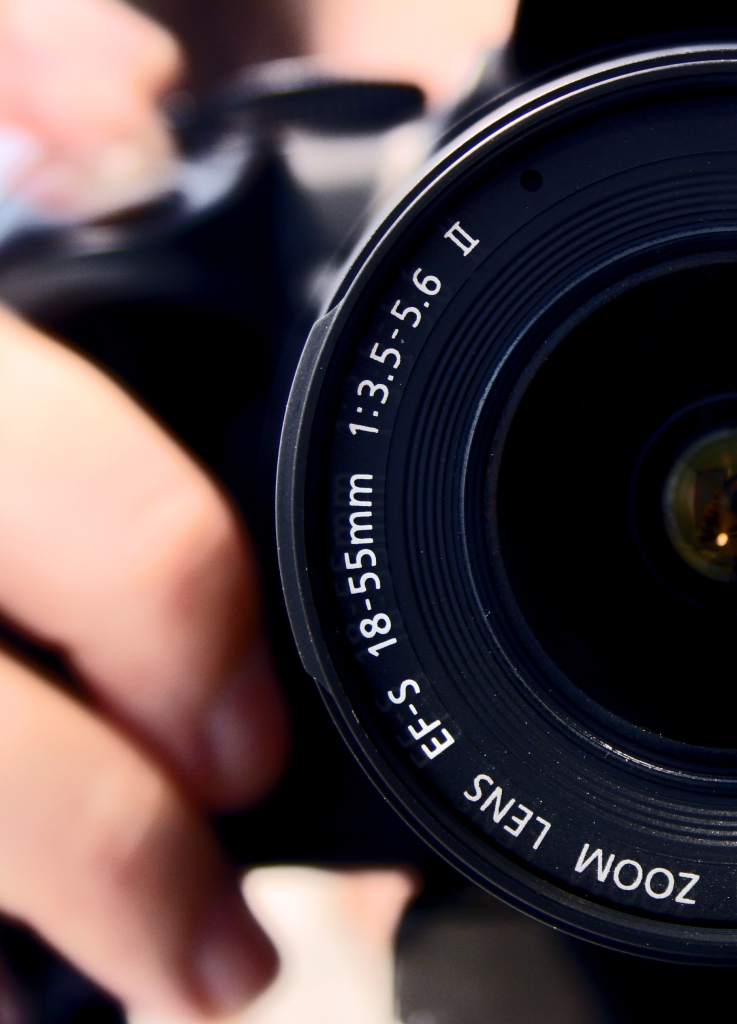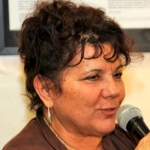 Photography has the potential to be a great instrument for social change that allows individuals to document their circumstances, share their stories, and change their lives. Photography and the use of images adds depth and forwards the social exploration and commentary on issues impacting our society.
Photography has the potential to be a great instrument for social change that allows individuals to document their circumstances, share their stories, and change their lives. Photography and the use of images adds depth and forwards the social exploration and commentary on issues impacting our society.
Photography as social documentary brings to light the stories and realities of violence against women and girls, from child brides, to female genital mutilation, to street harassment. The viewer is brought into the worlds depicted by each photographer and asked to join in the global conversation to effect change. The sixteen photographers selected examine the impact of images and the power of storytelling to study and raise awareness of violence against women and girls. Some of the projects, like Project Unbreakable, bring the viewer into the project by having people submit their own pictures of street harassment.
These diverse photographers represent a different countries and different genres of the visual arts. Some of them are global celebrities, others are well-respected in their countries or genres of documentary, portraiture, or street photography. It is the movement to end VAW that unites and inspires them and we hope that all of them will continue to work with the movement in years to come. We hope that these 16 photographers will engage you and inspire you to share and expand your own creative conversations about violence against women.
Note: To learn more about these 16 photographers and their work, click on their names in the header above their write-up.
Written and Compiled by Angelique Mulholland; Introduction by Carol Olson
________________________________________________________________________
Photographer Against VAW #1: Ann Jones – United States of America
 Journalist, photographer and humanitarian Ann Jones has spearheaded the International Rescue Committee’s Global Crescendo Project and implemented its simple but powerful strategy across Africa. In countries torn apart by war, women are armed with digital cameras and encouraged to document the daily violence and subjugation of their lives in the aftermath of civil war. Women have presented their photos – evidence of daily violence committed usually by their husbands and fathers – and for the first time, they have been heard. The effect on local elders and tribal chiefs has been groundbreaking and some elders have started to make changes in consultation with the photographers involved. In many traditional and patriarchal communities women are forbidden to touch new appliances in the house. However, through supporting each other, they have overcome their fears and have taken some striking photos that capture the everyday violence that so many women suffer.
Journalist, photographer and humanitarian Ann Jones has spearheaded the International Rescue Committee’s Global Crescendo Project and implemented its simple but powerful strategy across Africa. In countries torn apart by war, women are armed with digital cameras and encouraged to document the daily violence and subjugation of their lives in the aftermath of civil war. Women have presented their photos – evidence of daily violence committed usually by their husbands and fathers – and for the first time, they have been heard. The effect on local elders and tribal chiefs has been groundbreaking and some elders have started to make changes in consultation with the photographers involved. In many traditional and patriarchal communities women are forbidden to touch new appliances in the house. However, through supporting each other, they have overcome their fears and have taken some striking photos that capture the everyday violence that so many women suffer.
Photographer Against VAW #2: Ann-Christine Woehrl – Germany
 The German photographer Ann-Christine Woehrl has taken pictures of women who have survived acid attacks and through her work has documented great suffering and great strength. Acid attacks are becoming increasingly common across a number of countries in South East Asia and most recently examples of acid attacks have been cited in domestic violence cases in Italy. Ann-Christine’s photos show women who have found life and joy after being scarred so terribly – often by husbands or partners and sometimes after years of physical abuse. Ann-Christine’s work is collated in her exhibition entitled “UN/VISIBLE” and can be seen at the Ethnological Museum of Munich until January 2015. Ann-Christine commented: “My concern is for women who have become invisible in their cultures, to be made visible again.”
The German photographer Ann-Christine Woehrl has taken pictures of women who have survived acid attacks and through her work has documented great suffering and great strength. Acid attacks are becoming increasingly common across a number of countries in South East Asia and most recently examples of acid attacks have been cited in domestic violence cases in Italy. Ann-Christine’s photos show women who have found life and joy after being scarred so terribly – often by husbands or partners and sometimes after years of physical abuse. Ann-Christine’s work is collated in her exhibition entitled “UN/VISIBLE” and can be seen at the Ethnological Museum of Munich until January 2015. Ann-Christine commented: “My concern is for women who have become invisible in their cultures, to be made visible again.”
Photographer Against VAW #3: Donna Ferrato – United States of America
 The opening message on Donna Ferrato’s website states: “The mission of I Am Unbeatable is to raise awareness, educate and prevent domestic violence against women and their children through real stories and real people.” Donna’s mission, which has spanned over three decades, has resulted in a collection of poignant and haunting images candidly showing the suffering involved for all the family when domestic violence occurs. Indeed, some of Donna’s images capture an assault taking place. In 1991, Donna published a corresponding book “Living with the enemy”. Her photos also document the lives of women who are serving life sentences for killing their abusers and images of children who have lived through abuse. Donna has been featured in Time magazine, won numerous awards and she has met privately with Hillary Clinton to discuss the problem of domestic violence. Her project is called “Unbeatable” because she believes every woman abused by a partner of spouse has the courage to leave the violence and create a new life for herself and her children – free from the fear of violence.
The opening message on Donna Ferrato’s website states: “The mission of I Am Unbeatable is to raise awareness, educate and prevent domestic violence against women and their children through real stories and real people.” Donna’s mission, which has spanned over three decades, has resulted in a collection of poignant and haunting images candidly showing the suffering involved for all the family when domestic violence occurs. Indeed, some of Donna’s images capture an assault taking place. In 1991, Donna published a corresponding book “Living with the enemy”. Her photos also document the lives of women who are serving life sentences for killing their abusers and images of children who have lived through abuse. Donna has been featured in Time magazine, won numerous awards and she has met privately with Hillary Clinton to discuss the problem of domestic violence. Her project is called “Unbeatable” because she believes every woman abused by a partner of spouse has the courage to leave the violence and create a new life for herself and her children – free from the fear of violence.
TRIGGER WARNING: The photographs taken by Ferrato may be distressing for some readers.
Photographer Against VAW #4: Gareth Barton – United Kingdom
 Gareth Barton, a photographer for UK charity Flame International, won the 2013 photography competition “Look Again” for 28 Too Many – a charity which seeks to empower survivors of FGM and create positive relationships for women across Africa. Gareth gave an emphatic and emotional acceptance speech. “I hate this. I hate this stuff (violence against women)…I want to see it ended.” His striking photo of Sarah, a young woman in South Sudan who was captured by the Lord’s Resistance Army (LRA) was the winner among many other stand-out photographs on the subject of violence against women. Sarah’s story is both fortuitous and tragic. Along with 14 other innocents, including her mother-in-law, Sarah was selected to be the wife of the captain of LRA. When they found she was pregnant, unusually, she was released, however, not before the other abductees were brutally murdered in front of her, including her mother-in-law. Sarah’s calm, poignant poise and story captured the hearts of the judges and, of course, the heart of the photographer.
Gareth Barton, a photographer for UK charity Flame International, won the 2013 photography competition “Look Again” for 28 Too Many – a charity which seeks to empower survivors of FGM and create positive relationships for women across Africa. Gareth gave an emphatic and emotional acceptance speech. “I hate this. I hate this stuff (violence against women)…I want to see it ended.” His striking photo of Sarah, a young woman in South Sudan who was captured by the Lord’s Resistance Army (LRA) was the winner among many other stand-out photographs on the subject of violence against women. Sarah’s story is both fortuitous and tragic. Along with 14 other innocents, including her mother-in-law, Sarah was selected to be the wife of the captain of LRA. When they found she was pregnant, unusually, she was released, however, not before the other abductees were brutally murdered in front of her, including her mother-in-law. Sarah’s calm, poignant poise and story captured the hearts of the judges and, of course, the heart of the photographer.
Photographer Against VAW #5: Grace Brown – United States of America
 The brain child of photographer Grace Brown, Project Unbreakable is a pioneering photography project that depicts survivors of sexual assault holding up posters on which they quote their attackers. Since its founding in 2011, the project has showcased over 2,000 survivors’ stories in pictures. The mission of Project Unbreakable is “to increase awareness of the issues surrounding sexual assault and encourage the act of healing through art.” Project Unbreakable has been featured in media outlets such as Glamour, TIME, Buzzfeed, and The Guardian. Grace tours universities and schools across North America to educate on sexual violence and introduce Project Unbreakable to young people. Women aged 18 – 25 years old are in the highest risk category for rape and abuse and Project Unbreakable seeks to promote healing for women who have experienced sexual violence.
The brain child of photographer Grace Brown, Project Unbreakable is a pioneering photography project that depicts survivors of sexual assault holding up posters on which they quote their attackers. Since its founding in 2011, the project has showcased over 2,000 survivors’ stories in pictures. The mission of Project Unbreakable is “to increase awareness of the issues surrounding sexual assault and encourage the act of healing through art.” Project Unbreakable has been featured in media outlets such as Glamour, TIME, Buzzfeed, and The Guardian. Grace tours universities and schools across North America to educate on sexual violence and introduce Project Unbreakable to young people. Women aged 18 – 25 years old are in the highest risk category for rape and abuse and Project Unbreakable seeks to promote healing for women who have experienced sexual violence.
TRIGGER WARNING: The photographs featured in Project Unbreakable may be distressing for some readers.
Photographer Against VAW #6: Jillian Edelstein – South Africa and the United Kingdom
 Jillian Edelstein is a London-based award-winning international photographer and The Pixel Project’s principal photographer. Jillian has dedicated her time and extraordinary skills for The Pixel Project’s Celebrity Male Role Model Pixel Reveal campaign to help raise awareness and funds for the cause to end violence against women. Jillian has photographed The Pixel Project’s celebrity male role models in secret locations and has supported the mission of the campaign to get more men speaking out against violence against women. The portraits are currently hidden under a virtual 1-million pixel cover and being gradually revealed as donors donate $1 per pixel. Jillian grew up in turbulent South Africa and witnessed firsthand violence and injustice. This galvanised her drive and passion to work toward ending injustice in all its forms. In the late 1990s, Jillian made several trips to South Africa to document the work of the Truth and Reconciliation Commission and her award-winning book Truth and Lies, was shot in large format and published in 2002.
Jillian Edelstein is a London-based award-winning international photographer and The Pixel Project’s principal photographer. Jillian has dedicated her time and extraordinary skills for The Pixel Project’s Celebrity Male Role Model Pixel Reveal campaign to help raise awareness and funds for the cause to end violence against women. Jillian has photographed The Pixel Project’s celebrity male role models in secret locations and has supported the mission of the campaign to get more men speaking out against violence against women. The portraits are currently hidden under a virtual 1-million pixel cover and being gradually revealed as donors donate $1 per pixel. Jillian grew up in turbulent South Africa and witnessed firsthand violence and injustice. This galvanised her drive and passion to work toward ending injustice in all its forms. In the late 1990s, Jillian made several trips to South Africa to document the work of the Truth and Reconciliation Commission and her award-winning book Truth and Lies, was shot in large format and published in 2002.
Photographer Against VAW #7: Mary Ellen Mark – United States of America
 Mary Ellen Mark’s interest lies with people living on the fringes of society. Her work has been described by the California Museum of Women Photography as being “somewhere between social documentary photography and photojournalism.” In 1981, Mary lived with and photographed the infamous “cage girls:” prostitutes living in cage-like brothels and ostracised from India’s fiercely hierarchical social system. The project became known as The Cage Girls of Mumbai. The prostitutes did not have pimps, were free of drugs, and were a close-knit community. After living with the cage girls for three months, Mary commented on the young women: “All of them, even the most seemingly aggressive, are vulnerable.” Mary’s photos portray their vulnerability with great sensitivity. One photo shows a prostitute with a client whilst a child, presumably her daughter, looks on – confused and angry. Although prostitution is illegal in India, there continues to be demand among men from all classes of India’s society. Often, young girls are trafficked from poorer rural areas and forced to work as prostitutes. They are vulnerable to violence, rape and can contract HIV at a young age. Mary Ellen’s work in the early 80s shows the vulnerability and the young age of the prostitutes, and unfortunately in the 30 years since Mary took the photos, very little has changed.
Mary Ellen Mark’s interest lies with people living on the fringes of society. Her work has been described by the California Museum of Women Photography as being “somewhere between social documentary photography and photojournalism.” In 1981, Mary lived with and photographed the infamous “cage girls:” prostitutes living in cage-like brothels and ostracised from India’s fiercely hierarchical social system. The project became known as The Cage Girls of Mumbai. The prostitutes did not have pimps, were free of drugs, and were a close-knit community. After living with the cage girls for three months, Mary commented on the young women: “All of them, even the most seemingly aggressive, are vulnerable.” Mary’s photos portray their vulnerability with great sensitivity. One photo shows a prostitute with a client whilst a child, presumably her daughter, looks on – confused and angry. Although prostitution is illegal in India, there continues to be demand among men from all classes of India’s society. Often, young girls are trafficked from poorer rural areas and forced to work as prostitutes. They are vulnerable to violence, rape and can contract HIV at a young age. Mary Ellen’s work in the early 80s shows the vulnerability and the young age of the prostitutes, and unfortunately in the 30 years since Mary took the photos, very little has changed.
TRIGGER WARNING: The photographs taken by Mark may be distressing for some readers.
Photographer Against VAW #8: Meeri Koutaniemi – Finland
 In November 2013, Finnish photographer Meeri Koutaniemi witnessed two step-sisters, Isina and Nasirian* from the Maasai tribe in Kenya, endure the illegal practice of Female Genital Mutilation (FGM). The United Nations estimates that FGM affects 125 million girls across the world and many are suffering from the horrific, life altering effects without proper access to medical treatment or psychological support. Koutaniemi met with the father of the sisters and gained permission to document the “coming-of-age ritual”. Koutaniemi’s black and white photos begin with beautiful portraits of the sisters, their house and their community. They go on to document their nervous faces before the ritual, then the horror of their screaming faces during the cutting and the sadness and pain that seems to envelop them after. Koutaniemi says that they performed type 2 FGM, where the clitoris and labia are completely removed. Some FGM activists object to this kind of photography to raise awareness of this abuse. Koutaniemi has said she will continue to document this terrible crime against young girls and the effect it has on their lives.
In November 2013, Finnish photographer Meeri Koutaniemi witnessed two step-sisters, Isina and Nasirian* from the Maasai tribe in Kenya, endure the illegal practice of Female Genital Mutilation (FGM). The United Nations estimates that FGM affects 125 million girls across the world and many are suffering from the horrific, life altering effects without proper access to medical treatment or psychological support. Koutaniemi met with the father of the sisters and gained permission to document the “coming-of-age ritual”. Koutaniemi’s black and white photos begin with beautiful portraits of the sisters, their house and their community. They go on to document their nervous faces before the ritual, then the horror of their screaming faces during the cutting and the sadness and pain that seems to envelop them after. Koutaniemi says that they performed type 2 FGM, where the clitoris and labia are completely removed. Some FGM activists object to this kind of photography to raise awareness of this abuse. Koutaniemi has said she will continue to document this terrible crime against young girls and the effect it has on their lives.
*names changed to protect their identities
TRIGGER WARNING: The photographs taken by Koutaniemi may be distressing for some readers.
Photographer Against VAW #9: Patrizia Pulga – Italy
 Inspired by One Billion Rising – a global protest against gender based violence through the medium of dance – Italian photographer Patrizia Pulga created a unique photography exhibition intent on destroying the “weeping victim” stereotype. She visualised a group of women in clothes she’d designed in different locations around the world, wearing the slogans from the international protest. She comments: “I never liked campaigns against violence which represent women as the eternal, weeping, battered and bruised victims. So I decided to produce symbolic pictures whose subjects are female forms wearing dresses or T-shirts with slogans against violence upon women.” The effect is alternative, vibrant and makes the viewer look twice at the slogans as well as the beautifully contrasting colours.
Inspired by One Billion Rising – a global protest against gender based violence through the medium of dance – Italian photographer Patrizia Pulga created a unique photography exhibition intent on destroying the “weeping victim” stereotype. She visualised a group of women in clothes she’d designed in different locations around the world, wearing the slogans from the international protest. She comments: “I never liked campaigns against violence which represent women as the eternal, weeping, battered and bruised victims. So I decided to produce symbolic pictures whose subjects are female forms wearing dresses or T-shirts with slogans against violence upon women.” The effect is alternative, vibrant and makes the viewer look twice at the slogans as well as the beautifully contrasting colours.
Photographer Against VAW #10: Pete Muller – Kenya and the United States of America
 War in the Congo has raged since the 1990s and women’s bodies have long been used as a standard weapon of war. Rape has been used as a tool to ‘demoralise the enemy’ between local militia fighting over land and resources. This seemingly relentless violence, rape, and sexual torture has affected tens of thousands of women since the conflict began and countless lives have been destroyed. In 2011, with the support of numerous international aid organisations, the Congolese military finally sought to intervene and curb this terrible trend with the first of the rape trials. Pete Muller, a freelance photojournalist documented the trial of Mutware Daniel Kibibi, the most senior military officer to be accused of rape and crimes against humanity. The photos are split into two sections: The Trial and The Victims. The victims’ identities are protected as rape is still a taboo subject and women are often ostracised from their families and communities. The photos of the trial show the accused and other soldiers standing trial. It is clear that the justice system is entirely made up of men. After 10 days, Kibibi and 8 of his men were sentenced to decades of hard labour. It was a landmark case and the crowd were heard chanting, “You thought you got away with it, now you will pay.”
War in the Congo has raged since the 1990s and women’s bodies have long been used as a standard weapon of war. Rape has been used as a tool to ‘demoralise the enemy’ between local militia fighting over land and resources. This seemingly relentless violence, rape, and sexual torture has affected tens of thousands of women since the conflict began and countless lives have been destroyed. In 2011, with the support of numerous international aid organisations, the Congolese military finally sought to intervene and curb this terrible trend with the first of the rape trials. Pete Muller, a freelance photojournalist documented the trial of Mutware Daniel Kibibi, the most senior military officer to be accused of rape and crimes against humanity. The photos are split into two sections: The Trial and The Victims. The victims’ identities are protected as rape is still a taboo subject and women are often ostracised from their families and communities. The photos of the trial show the accused and other soldiers standing trial. It is clear that the justice system is entirely made up of men. After 10 days, Kibibi and 8 of his men were sentenced to decades of hard labour. It was a landmark case and the crowd were heard chanting, “You thought you got away with it, now you will pay.”
Photographer Against VAW #11: Sara Naomi Lewkowicz – United States of America

Sara Naomi Lewkowicz is a freelance photographer and a Masters degree candidate at Ohio university. In 2012, Sara was given an assignment to document the difficulties of being an ex-convict after being set free from prison. She met an ex-convict – Shane, 31 – and his girlfriend – Maggie, 19 – and she began to document their lives. What she didn’t know, was during the assignment she would take some remarkable and incredibly graphic photos documenting domestic violence. One night Shane and Maggie have a drunken argument in a bar and when they return home, Shane physically assaults Maggie. Sara captures everything. The assault itself, the police arriving, Maggie’s daughter witnessing the fight, Maggie packing up and leaving and her attempt to start a new life with her former husband and father of her children. The photos are chilling and extraordinary in the way they destroy the silence surrounding domestic violence by exposing it so openly. Sara won the 2013 Ville de Perpignan Rémi Ochlik Award for her work documenting domestic violence and she has recently started working with Donna Ferrato – a photographer who has been documenting domestic violence for over 30 years.
TRIGGER WARNING: The photographs taken by Lewkowicz may be distressing for some readers.
Photographer Against VAW #12: Souvid Datta – India and the United Kingdom
 Sonagachi is one of India’s oldest red light districts. Countless children are born into a life of prostitution, violence and poverty. Kolkata’s local men visit the brothels to pay for sex with both local and trafficked women, some of whom are below the age of consent. UK-based photographer Souvid Datta, who is originally from Kolkata, first visited Sonagachi by accident when he was a child. He was lost and stumbled into the slum and vividly remembers bright red lights and young girls being led away by middle aged men in suits. At the age of 21, Datta decided to expose the truth of Sonagachi by taking pictures of the local inhabitants, his main focus being on mothers and daughters. In Datta’s brave series, In The Shadows Of Kolkata, we witness three generations of women partaking in a profession that is a means of survival. Some images are full of life and colour – children playing games in the streets full of energy and innocence. Yet they are juxtaposed with the darkness of the mother’s work, and the viewer is left wondering how much of the adult world has already encroached on the childhoods of their children. Datta says: “The juxtaposition of the adult profession with the innocence of youth adds an additional layer of disturbance to an already troubling theme.”
Sonagachi is one of India’s oldest red light districts. Countless children are born into a life of prostitution, violence and poverty. Kolkata’s local men visit the brothels to pay for sex with both local and trafficked women, some of whom are below the age of consent. UK-based photographer Souvid Datta, who is originally from Kolkata, first visited Sonagachi by accident when he was a child. He was lost and stumbled into the slum and vividly remembers bright red lights and young girls being led away by middle aged men in suits. At the age of 21, Datta decided to expose the truth of Sonagachi by taking pictures of the local inhabitants, his main focus being on mothers and daughters. In Datta’s brave series, In The Shadows Of Kolkata, we witness three generations of women partaking in a profession that is a means of survival. Some images are full of life and colour – children playing games in the streets full of energy and innocence. Yet they are juxtaposed with the darkness of the mother’s work, and the viewer is left wondering how much of the adult world has already encroached on the childhoods of their children. Datta says: “The juxtaposition of the adult profession with the innocence of youth adds an additional layer of disturbance to an already troubling theme.”
TRIGGER WARNING: The photographs taken by Datta may be distressing for some readers.
Photographer Against VAW #13: Stephanie Sinclair – United States of America
 Human rights photographer Stephanie Sinclair has been working on a project to expose childhood marriage for over 9 years. An issue in over 50 countries around the world, childhood marriage is a significant problem that dramatically affects the life of a young girl. A girl forced into marriage is often robbed of an education, her freedom, her childhood and has a higher chance of becoming a victim of domestic and sexual violence. In addition, many child brides have complications during child birth, and some die as their bodies have not fully developed and are not ready to carry children. Stephanie commented: “It’s a harmful traditional practice that is slowly changing we just want to see it change even faster.” Too Young To Wed: The Secret World of Child Brides reveals saddening photos of young girls and their much older husbands as well as a young girl being carted away to her new husband’s house on their wedding night. Stephanie celebrates success stories with her photography too. Nujood Ali – the 11-year-old girl who successfully divorced her much older, abusive husband in a landmark case in Yemen – is celebrated with a stunning photo which simply screams: “Freedom.” Stephanie’s images have also been used for The Girl Summit, which took place in London in July 2014, and is a global event aimed at mobilising and accelerating efforts to end child marriage and female genital mutilation in a generation.
Human rights photographer Stephanie Sinclair has been working on a project to expose childhood marriage for over 9 years. An issue in over 50 countries around the world, childhood marriage is a significant problem that dramatically affects the life of a young girl. A girl forced into marriage is often robbed of an education, her freedom, her childhood and has a higher chance of becoming a victim of domestic and sexual violence. In addition, many child brides have complications during child birth, and some die as their bodies have not fully developed and are not ready to carry children. Stephanie commented: “It’s a harmful traditional practice that is slowly changing we just want to see it change even faster.” Too Young To Wed: The Secret World of Child Brides reveals saddening photos of young girls and their much older husbands as well as a young girl being carted away to her new husband’s house on their wedding night. Stephanie celebrates success stories with her photography too. Nujood Ali – the 11-year-old girl who successfully divorced her much older, abusive husband in a landmark case in Yemen – is celebrated with a stunning photo which simply screams: “Freedom.” Stephanie’s images have also been used for The Girl Summit, which took place in London in July 2014, and is a global event aimed at mobilising and accelerating efforts to end child marriage and female genital mutilation in a generation.
Photographer Against VAW #14: Tim Matsui – United States of America
 In collaboration with The Alexia Foundation, a charity that uses the art of photography as a force for change, Tim Matsui has produced a collection of photos and a documentary on the subject of the trafficking of minors for the purposes of sexual exploitation in the US. Tim’s most striking photo of his collection is of a young girl called Lisa. She is arrested on charges of prostitution but instead of being taken to prison the police take her to a safe house that helps women and girls exit prostitution and life on the streets. When she first arrives she is given a bathrobe. She is told that she can keep the robe and that people care about her. She replies: “Why? I don’t care about myself.” The corresponding photo shows the back of Lisa in her robe eating some food. You can see she is young and vulnerable, even from this picture where you do not see her face. Working with Media Storm, Tim has made a feature length documentary called The Long Night about Lisa and three other people whose lives are torn apart by sexual exploitation.
In collaboration with The Alexia Foundation, a charity that uses the art of photography as a force for change, Tim Matsui has produced a collection of photos and a documentary on the subject of the trafficking of minors for the purposes of sexual exploitation in the US. Tim’s most striking photo of his collection is of a young girl called Lisa. She is arrested on charges of prostitution but instead of being taken to prison the police take her to a safe house that helps women and girls exit prostitution and life on the streets. When she first arrives she is given a bathrobe. She is told that she can keep the robe and that people care about her. She replies: “Why? I don’t care about myself.” The corresponding photo shows the back of Lisa in her robe eating some food. You can see she is young and vulnerable, even from this picture where you do not see her face. Working with Media Storm, Tim has made a feature length documentary called The Long Night about Lisa and three other people whose lives are torn apart by sexual exploitation.
TRIGGER WARNING: The photographs taken by Matsui may be distressing for some readers.
Photographer Against VAW #15: Vlad Sokhin – Portugal
 Crying Meri is a collection of photographs by Vlad Sokhin documenting the atrocities committed against women in Papua New Guinea. Doctors Without Borders has said that the levels of violence witnessed by their volunteers is akin to that of war-torn countries. Cited on Vlad’s website, recent statistics from the Papua New Guinea National Department of Health, indicate that “more than two thirds of women have experienced physical or sexual violence, one third were subjected to rape and 17% of sexual abuse involved girls between the ages 13 and 14.” Women are seen as the property of men and perpetrators of violence act with impunity. Raskol gangs, which operate in settlements in the larger cities, rule with brutal violence and go unpunished for their crimes. In order to enter one of the gangs, the men must rape a woman. If he murders the woman, he is held in higher regard. Domestic violence is also a widespread crime and Vlad’s photos show the mutilated bodies of women who have been violently abused by their husbands.
Crying Meri is a collection of photographs by Vlad Sokhin documenting the atrocities committed against women in Papua New Guinea. Doctors Without Borders has said that the levels of violence witnessed by their volunteers is akin to that of war-torn countries. Cited on Vlad’s website, recent statistics from the Papua New Guinea National Department of Health, indicate that “more than two thirds of women have experienced physical or sexual violence, one third were subjected to rape and 17% of sexual abuse involved girls between the ages 13 and 14.” Women are seen as the property of men and perpetrators of violence act with impunity. Raskol gangs, which operate in settlements in the larger cities, rule with brutal violence and go unpunished for their crimes. In order to enter one of the gangs, the men must rape a woman. If he murders the woman, he is held in higher regard. Domestic violence is also a widespread crime and Vlad’s photos show the mutilated bodies of women who have been violently abused by their husbands.
TRIGGER WARNING: The photographs taken by Sokhin may be distressing for some readers.
Photographer Against VAW #16: Walter Astrada – Argentina
 Walter Astrada was born in Buenos Aires, Argentina and is a freelance photographer living in Madrid. Walter’s ongoing project Violence Against Women has been lauded by critics as one of the most graphic yet poignant portrayals of different forms of violence against women around the world. He has produced four collections so far. In Femicide In Guatemala, Walter shines a light on the widespread problem of violence against women in this South American country which has led the highest rate of femicide – the killing of women – in the region. Sexual Violence In Eastern Congo has one of Walter’s most famous shots, a woman has a suckling baby at her breast and in the background we see an advancing tank on its way to destroy her village. Shattered Myths In Norway demonstrates the brutal violence that can take place against women in a seemingly peaceful country and Undesired takes a look at the growing problem of female foeticide in India.
Walter Astrada was born in Buenos Aires, Argentina and is a freelance photographer living in Madrid. Walter’s ongoing project Violence Against Women has been lauded by critics as one of the most graphic yet poignant portrayals of different forms of violence against women around the world. He has produced four collections so far. In Femicide In Guatemala, Walter shines a light on the widespread problem of violence against women in this South American country which has led the highest rate of femicide – the killing of women – in the region. Sexual Violence In Eastern Congo has one of Walter’s most famous shots, a woman has a suckling baby at her breast and in the background we see an advancing tank on its way to destroy her village. Shattered Myths In Norway demonstrates the brutal violence that can take place against women in a seemingly peaceful country and Undesired takes a look at the growing problem of female foeticide in India.
TRIGGER WARNING: The photographs taken by Astrada may be distressing for some readers.
___________________________________________
Photo Credits/Sources:
- Ann Jones – From www.annjonesonline.com
- Anne-Christine Woehrl – From “Attack on body and soul: How do women survive acid attacks?”
- Donna Ferrato – From www.donnaferrato.com
- Gareth Barton – From www.spreadcommunications.co.uk
- Grace Brown – Courtesy of Grace Brown/Project Unbreakable
- Jillian Edelstein – Courtesy of The Pixel Project
- Mary Ellen Mark – Photo by Michael Underwood
- Meeri Koutaniemi – From www.echophotoagency.com
- Patrizia Pulga – Photo by Medardo Pedrini
- Pete Muller – From www.primecollective.com
- Sara Naomi Lewkowicz – From The Alexia Foundation blog
- Souvid Datta – From The Young Creatives blog
- Stephanie Sinclair – From WorldPressPhoto.com
- Tim Matsui – Photo by Frank Huster
- Vlad Sokhin – From www.loeildelaphotographie.com
- Walter Astrada – From www.walterestrada.com
![]() Art can be an effective healing tool and resource for survivors of Violence Against Women (VAW) who suffer from post traumatic stress disorder and other disorders due to the impact to one’s mental and emotional health from the violence. The creation of art acts as a catalyst to transform pain and negative experiences to healing and growth.
Art can be an effective healing tool and resource for survivors of Violence Against Women (VAW) who suffer from post traumatic stress disorder and other disorders due to the impact to one’s mental and emotional health from the violence. The creation of art acts as a catalyst to transform pain and negative experiences to healing and growth.![]() Art Against #VAW #10: Wall of Memories: Las Desaparecidas de Cuidad Juarez – Mexico and United States of America
Art Against #VAW #10: Wall of Memories: Las Desaparecidas de Cuidad Juarez – Mexico and United States of America![]() Tatyana Fazlalizadeh is the woman behind “Stop Telling Women to Smile,” the public art project that is tackling gender-based street harassment in a big way. Through stunning wheat paste portraits and powerful statements like “My outfit is not an invitation” or “Women are not outside for your entertainment,” Fazlalizadeh fearlessly responds to the unsolicited act of cat calling with street art you can’t ignore. “Street harassment is a serious issue that affects women world wide,” Fazlalizadeh writes on her website. “This project takes women’s voices, and faces, and puts them in the street — creating a bold presence for women in an environment where they are so often made to feel uncomfortable and unsafe.”
Tatyana Fazlalizadeh is the woman behind “Stop Telling Women to Smile,” the public art project that is tackling gender-based street harassment in a big way. Through stunning wheat paste portraits and powerful statements like “My outfit is not an invitation” or “Women are not outside for your entertainment,” Fazlalizadeh fearlessly responds to the unsolicited act of cat calling with street art you can’t ignore. “Street harassment is a serious issue that affects women world wide,” Fazlalizadeh writes on her website. “This project takes women’s voices, and faces, and puts them in the street — creating a bold presence for women in an environment where they are so often made to feel uncomfortable and unsafe.”